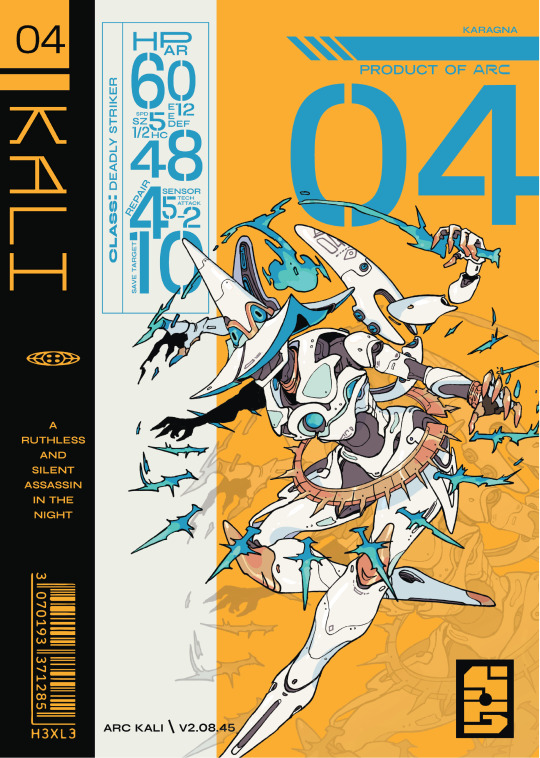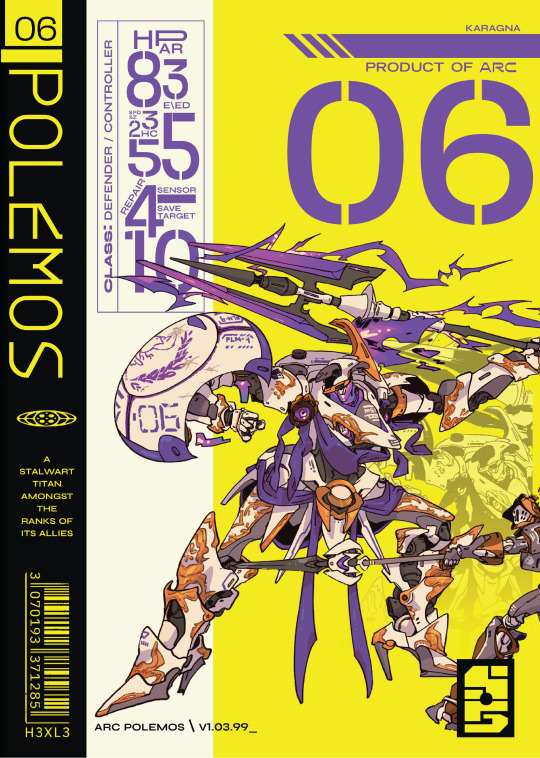WORK-IN-STRESS-PROGRESS | italian software map maker | LBGTQIA+ | I am 100% faking it till I make it dw
Don't wanna be here? Send us removal request.
Text
I don't think I can overstate the depth of impact trans women have had on indie ttrpgs.
5K notes
·
View notes
Text
how i learned ttrpg design, part 3
you can check out part 1 here and part 2 here
as always, this is about my personal experience learning ttrpg design, and i claim no particular expertise or authority on what constitutes "good" game design
3
so far, i've discussed the games i drew on for the start of my ttrpg education. now let's talk about how to improve (when you need to/if you want to). now, i'll say i don't think "improving" is a great way to think about it. i prefer to think about it as "how to be aware of the tools you need to accomplish your design goals"
for some people, the three games i've discussed are plenty for them to get started. these people tend to like experimenting for themselves and then doing more research when they need help. (i fall in this category.) other people may want to read more before starting in earnest. this is also a smart way to go. (obviously you can go overboard with researching so much that you never actually start, but we are far from that place here.) either way, at some point you'll need more information than you currently have.
how do you find the wisdom you seek? the best answer is simply asking for help from people you look up to/trust. but i've never been good at asking for help, so uhhh this post exists
quick story time. i recently visited maryland to go to my partner's sibling's wedding. in a local comic shop's manga section, i saw this book. i was like, oh fun, it's a manga about kids playing a goblin slayer ttrpg.

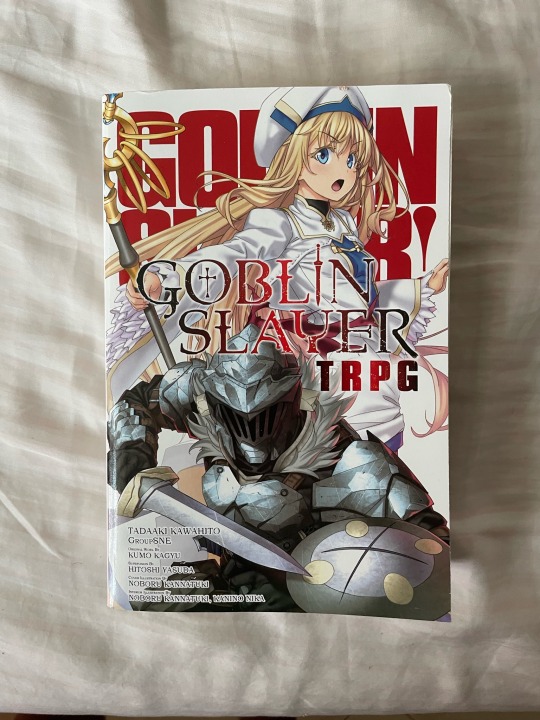
but then, when i opened the book...
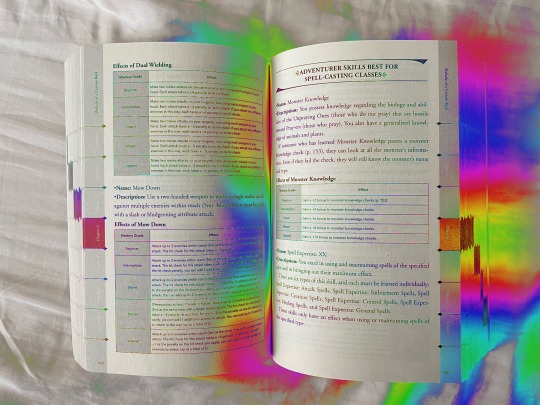
mechanics!!
it's a TTRPG!! i don't know anything about goblin slayer, but now i'm combing through this book for cool tech. of note so far: at the end of every round of combat, each player has to make an attrition check. fail that, and your fatigue score goes up. at 4 fatigue, you fall unconscious. at 5, you die. punishes long fights and incentivizes players to find alternate solutions. it uses only d6s. and there are sections of fiction illustrated with beautiful manga art. these choices feel old school to me, but it came out in 2019. now i'm really excited. i'll get to see what japanese osr is like!
to me, this pursuit of ttrpg tech feels like discovering an ancient library and searching through old tomes for the power i seek. and there's an online version of this that anyone can dig through for ttrpg tech: osr blogs
old school renaissance/revival, or "osr," as far as i understand it, is a ttrpg genre/design paradigm, typically along the lines of old school d&d. i'm not the best person to explain this, but the way i think about this school of design is it tends to prioritize player skill over character skill. it's the difference between solving a puzzle and rolling to solve a puzzle. because of this, they often make really cool mechanics for challenging players that don't just amount to "roll a 20, do the thing." they also tend to share their thoughts on traditional blogs.
here's an amazing, meticulously catalogued library of keystone OSR posts
by marcia b., @/traversefantasy on twitter, who has an OSR blog of her own using marxist and freudian frameworks for analysis
rise up comus
by josh mcCroo, who's working on a game called his majesty the worm. pretty sure i don't have to say anything else
permanent cranial damage
by ava islam, whose assertion that "Armour Class and Hit Points are the same thing" blew my mind when i was starting out
goblin's henchman
which is where I found the hex flower tech that i adapted for HEXFALL's main mechanic
and one non-OSR blog, that of jay dragon
yes i am a possum creek fangirl. this blog is bananas good. if you haven't read up on playground theory, oh boy you're in for a treat
final takeaway: you never know where you'll find new tools and ideas!
obviously credit people and don't use what's not yours. but have fun and share cool tech with others when you find it!
hope this was helpful <3
p.s. another place that apparently used to have a ton of ttrpg activity was google+. every so often i hear whispers of digital libraries filled with all sorts of salvaged g+ ttrpg treasures. never seen an invite link with my own eyes though. if you hear anything, let me know, will ya?
293 notes
·
View notes
Text
how i learned ttrpg design, pt. 2
again, i'm not an authority on game design. i'm just sharing how i did it from scratch in case anyone else is starting from scratch too.
2
i'm gonna take a whole post to talk about the FIRST indie TTRPG that opened my eyes up to what the genre could do outside of western fantasy dungeon crawls. it's an elegant 17-page TTRPG called Things, Eldritch and Terrifying. by s. gates (@/harpydora on twitter). i found it in the first trans rights bundle i bought on itch when i was getting into indie ttrpgs.

it's a one-on-one TTRPG where one player plays a human and the other plays an eldritch terror trying to gain access to our dimension. each has their own set of abilities and traits to choose from. you roleplay 5 scenes. after each one, the human awards the terror a token of favor or token of revulsion based on the interaction.
at the end, you draw from a playing card deck. the human gains a card for each token of revulsion. the terror gains a card for each token of favor. if the human has the highest card, the terror fails to make it in. if the terror has the highest card, the human invites them in.
i could go step by step and detail everything that's different between this game and, say, D&D or Pathfinder. but honestly i'd be here all day. TET could not be more different. it doesn't use dice, and in fact doesn't use a randomized resolution mechanic at all until the very end. the roleplaying determines the probabilities. and it's entirely possible that the human awards 4 tokens of revulsion and 1 token of favor, and the terror still draws the highest card. to me, it communicates that anyone can give into temptation, no matter how strong you think you are. it also communicates that this can be super hot. (i believe the author would agree with me lol)
the game's goal is to explore the intersection of horror and sensuality. in my opinion, it succeeds wildly. but i'm biased because my now partner and i used this game as an excuse to meet up for the first time IRL as a "yay we're vaxxed" thing. we're v happy and we're traveling to meet their extended family next week.
my point being it's a TOTALLY different paradigm of design. it opened my eyes SO much, and yet i've never heard anyone else talk about it.
my main takeaway: read small games. they can teach you a LOT, be full of depth, and have a BIG impact
corollary takeaway: YOUR small game is worth making
for example, my small game NIGHTHAWKS owes a lot to this game. and it's probably the most-played game of mine (as far as i can tell). i'll have a separate post talking about it soon.
happy designing!
314 notes
·
View notes
Text
how i learned ttrpg design, pt. 1
let me say this first. i don't consider myself particularly well-versed in game design, and i learn well by doing and emulating. i design primarily by gut feel with a sprinkle of basic math. i'm sharing how i did it from scratch in case anyone else is starting from scratch and wants to learn.
1
my top two "recommended reading" games are the first two games i read that i instantly fell in love with:
LUMEN by Spencer Campbell (Gila RPGs)
Wanderhome by Jay Dragon (Possum Creek Games)
the first is actually an SRD you can build your own games on. Spencer created a great system for fast-paced action games (probably 10X faster than 5e combat). LUMEN's simple dice core is what later influenced Caltrop Core's.
Wanderhome is a masterpiece. diceless and gmless. a game about home. about journeys. if you haven't already, read it and you'll know why it's on the list.
takeaway: read games you like and learn from them. ask yourself why you like certain mechanics and what kind of stories those mechanics would facilitate. for example, if you tried to convert Wanderhome to LUMEN, you'd have a very different game. in fact, the speedy dice system of LUMEN, even if you reskinned it to be non-violent, would destroy a lot of what makes Wanderhome special: those lingering moments, the quiet journeys, the irreplaceable joy of seeing the world you move through. the reverse is true too. LUMEN wouldn't be the same without the tight, fast-paced gameplay loop. i'm using extreme examples, but my point is: when you're learning, look for mechanics that would be conducive to the type of experience you want your game to facilitate.
403 notes
·
View notes
Text
So, you want to make a TTRPG…

Image from Pexels.
I made a post a long while back about what advice you would give to new designers. My opinions have changed somewhat on what I think beginners should start with (I originally talked about probability) but I thought it might be useful to provide some resources for designers, new and established, that I've come across or been told about. Any additions to these in reblogs are much appreciated!
This is going to be a long post, so I'll continue beneath the cut.
SRDs
So, you have an idea for a type of game you want to play, and you've decided you want to make it yourself. Fantastic! The problem is, you're not sure where to start. That's where System Reference Documents (SRDs) can come in handy. There are a lot of games out there, and a lot of mechanical systems designed for those games. Using one of these as a basis can massively accelerate and smooth the process of designing your game. I came across a database of a bunch of SRDs (including the licenses you should adhere to when using them) a while back, I think from someone mentioning it on Tumblr or Discord.
SRDs Database
Probability
So, you have a basic system but want to tweak it to work better with the vision you have for the game. If you're using dice, this is where you might want to consider probability. Not every game needs this step, but it's worth checking that the numbers tell the story you're trying to tell with your game. For this, I'll link the site I did in that first post, AnyDice. It allows you to do a lot of mathematical calculations using dice, and see the probability distribution that results for each. There's documentation that explains how to use it, though it does take practice.
AnyDice
Playtesting
So you've written the rules of your game and want to playtest it but can't convince any of your friends to give it a try. Enter Quest Check. Quest Check is a website created by Trekiros for connecting potential playtesters to designers. I can't speak to how effective it is (I've yet to use it myself) but it's great that a resource like it exists. There's a video he made about the site, and the site can be found here:
Quest Check
Graphic Design and Art
Game is written and tested? You can publish it as-is, or you can make it look cool with graphics and design. This is by no means an essential step, but is useful if you want to get eyes on it. I've got a few links for this. First off, design principles:
Design Cheatsheet
Secondly, art. I would encourage budding designers to avoid AI imagery. You'll be surprised how good you can make your game look with only shapes and lines, even if you aren't confident in your own artistic ability. As another option, public domain art is plentiful, and is fairly easy to find! I've compiled a few links to compilations of public domain art sources here (be sure to check the filters to ensure it's public domain):
Public Domain Sources 1
Public Domain Sources 2
You can also make use of free stock image sites like Pexels or Pixabay (Pixabay can filter by vector graphics, but has recently become much more clogged with AI imagery, though you can filter out most of it, providing it's tagged correctly).
Pexels
Pixabay
Fonts
Turns out I've collected a lot of resources. When publishing, it's important to bear in mind what you use has to be licensed for commercial use if you plan to sell your game. One place this can slip through is fonts. Enter, my saviour (and eternal time sink), Google Fonts. The Open Font License (OFL) has minimal restrictions for what you can do with it, and most fonts here are available under it:
Google Fonts
Publishing
So, game is designed, written, and formatted. Publishing time! There are two places that I go to to publish my work: itch.io and DriveThruRPG. For beginners I would recommend itch - there's less hoops to jump through and you take a much better cut of what you sell your games for, but DriveThruRPG has its own merits (@theresattrpgforthat made great posts here and here for discovering games on each). Itch in particular has regular game jams to take part in to inspire new games. I'll link both sites:
itch.io
DriveThruRPG
Finally, a bunch of other links I wasn't sure where to put, along with a very brief summary of what they are.
Affinity Suite, the programs I use for all my layout and designing. Has an up-front cost to buy but no subscriptions, and has a month-long free trial for each.
Affinity Suite
A database of designers to be inspired by or work with. Bear in mind that people should be paid for their work and their time should be respected.
Designer Directory
An absolute behemoth list of resources for TTRPG creators:
Massive Resources List
A site to make mockups of products, should you decide to go that route:
Mockup Selection
A guide to making published documents accessible to those with visual impairments:
Visual Impairment Guidelines
A post from @theresattrpgforthat about newsletters:
Newsletter Post
Rascal News, a great place to hear about what's going on in the wider TTRPG world:
Rascal News
Lastly, two UK-specific links for those based here, like me:
A list of conventions in the UK & Ireland:
Convention List
A link to the UK Tabletop Industry Network (@uktabletopindustrynetwork) Discord where you can chat with fellow UK-based designers:
TIN Discord
That's all I've got! Feel free to reblog if you have more stuff people might find useful (I almost certainly will be)!
468 notes
·
View notes
Text
Some of the animators at Titmouse need our help too! Here's a few links:
https://gofund.me/a81040a8
https://www.gofundme.com/f/help-clara-jeremy-rebuild-from-the-eaton-fire
133 notes
·
View notes
Text
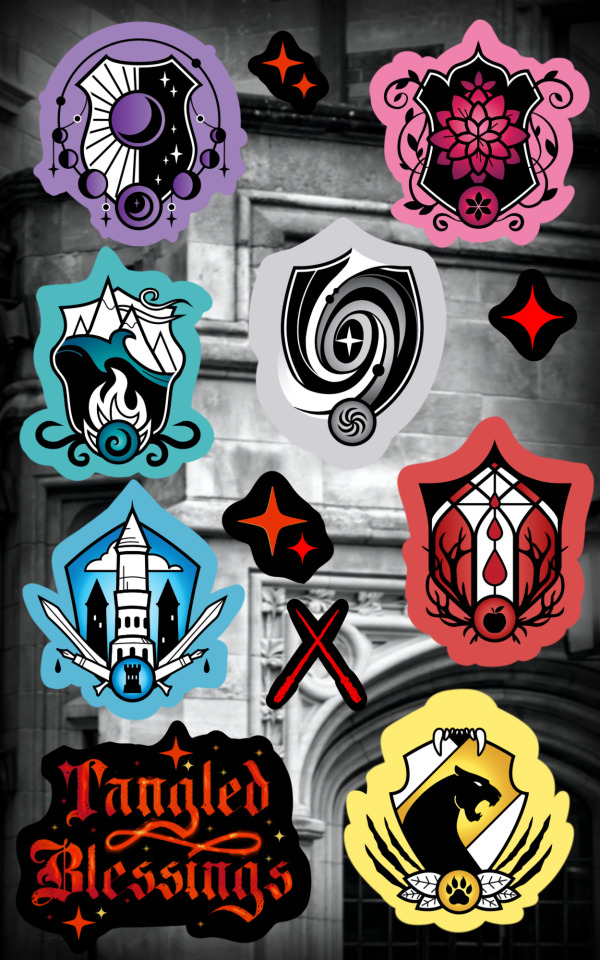
Did you know that in Tangled Blessings, my magic academy horror storytelling game, you're assigned a house?
There's seven houses total! Here's the sticker sheet that features all the house crests!
Crowdfunding ends within HOURS!
9 notes
·
View notes
Text

A father's plea for peace for his children and his sick wife
Imagine a world where instead of raindrops falling from the sky, bombs rain down, and instead of soothing lullabies, the sound of warplanes fills the air. This is the harsh reality that my children, Mounir (6 years old) and Siraj (4 years old), and my wife, who is suffering from cancer, live in. We live in Gaza, a place where hope seems to be fading.
I am Mohammed, Rawaa’s husband, and I feel the heavy burden of ensuring a better future for them.
The war took my job, our home, the very essence of our existence. We are now living in makeshift tents, sharing what little we have in this besieged land. However, in the midst of all this devastation, my wife's illness bothers me greatly because there is no treatment for it.
Friends in Egypt have offered us a chance to escape this nightmare, but the path to safety is blocked by a daunting barrier: the border crossing demands $5,000 for each life to pass through.
I plead with you, don't let my children become victims of war.
Your contribution, no matter how small, could be the key to unlocking a future free from fear and filled with opportunities. Your assistance could mean the difference between life and death for my family. With your help, we can secure safe passage out of Gaza and begin the journey toward a better future. A future where peace and prosperity prevail.
Thanks for your support, and I'm grateful for any help you can give me during this difficult time.
To donate, visit the website below
👇👇👇👇👇👇👇👇👇👇
https://gofund.me/aa7ade8f
https://gofund.me/aa7ade8f
2K notes
·
View notes
Text
D&D is the Taylor Swift of TTRPGs by which I mean it's something with broad mainstream appeal and name recognition and also there are people out there who pretend it's gay
20K notes
·
View notes
Text
Further thoughts.
There is a tendency to write settings - particularly for interactive media like ttrpgs, larps, etc - that are essentially gender-blind, where you can create whoever you want without that having an effect on the game. The decision to be gay, or a woman, or trans, or a gay trans woman with pink hair is an aesthetic choice that will not give you a meaningfully different experience in the game.
This rather kneecap's the setting's ability to tell queer stories, imho. If we take it as read that queerness refers to gender- and sexuality-based identities and behaviours that fall outside of the societal norms, then the experience of falling outside those societal norms is (rather tautologically) a key element of queerness.
So, in a completely gender-blind setting, one can't - tautologically - be gender-nonconforming. There is no expectation to conform to. The experience of queerness, of being outside of societal norms, becomes null and void. Such a setting will feature homosexuality, but it won't feature gay pride, and nor will it need to as none of the societal forces that led to the pride movement exist.
This is a double-edged sword. On the one hand, a world where one is not oppressed for one's identity is an enjoyable world to explore for what should be obvious reasons. On the other hand, it becomes impossible to tell (say) a coming-out story in a world where there's no closet to be in to begin with.
There is also the element that whilst a setting may say its gender-blind, it's still written and played in by people from the real world, who still subconsciously inherit real-world biases, and this can be reflected in the world.
While (say) women might have just as much right to political power as men, if in practice the people with political power are disproportionately men, that sexism is still present. Far from removing it, the gender-blindness of the setting simply obfuscates it, and often actively proves an obstacle to addressing it; one cannot call somebody out in character for sexism in a setting where sexism doesn't exist, no matter how sexist they're being.
(Similar biases around sexuality, transness, polyamory, kink, aceness, etc also creep in).
(In many cases, this can also apply to other axes of marginalisation, such as race, etc. However, in a lot of settings this doesn't apply the same way. Many fantasy settings are deeply opinionated about a character's ancestry; see the D&D skull-callipers explaining that elves are just more intelligent and agile than everybody else, and this being a mechanically enforced fact in the world.)
My point, anyway, is that in these cases efforts towards inclusivity can paradoxically erase that which they seek to include. One cannot represent the lived experience of a marginalised identity in a setting that totally denies the existence of that marginalisation.
1K notes
·
View notes
Text
Now I’ve got people thinking that when I say that TTRPG campaigns shouldn’t be scripted, that I mean that they must be 100% improvised right there on the spot with zero planning or structure. I can’t fucking win.
And therefore critical role must be destroyed
1K notes
·
View notes
Text
have you ever enjoyed a fic of mine, like plant a garden in the yard, then or queen of candia, and thought “wow, i’d make a request but i Wish i could guarantee she takes it and also that it’s at least a minimum of [insert wordcount here]?”


i’m part of d20 writers for palestine (and there are also artists and editors!)! for PWYW of at least $5 or pricing for a specific minimum fic length, you can make a custom request :) it doesn’t have to be d20 or even fanfiction; if you want me to write your OCs, i’m happy to!
you can find the carrd for d20 artists for palestine here for more information, or jump directly to the spreadsheet to see current availability and pricing here.
12 notes
·
View notes
Text
D&D is the Taylor Swift of TTRPGs by which I mean it's something with broad mainstream appeal and name recognition and also there are people out there who pretend it's gay
20K notes
·
View notes
Text
Tangled Blessings: Echoes of Lost Electives launches tomorrow, September 3, on BackerKit!
>>> Click here to follow the project <<<
Tangled Blessings is my dark academia magic academy roleplaying game that features assigned houses, magic, and terrifying forces that don't want to see you graduate.
Tangled Blessings: Echoes of Lost Electives adds even more content. I invited 11 contributors including the 10 pictured below to add even more to the cursed school.
The base game only requires tarot cards -- no weird dice. Plus, you can play by yourself or with a friend who will take on the role of your academic rival. You don't even need a game master!
We've all worked really hard on the project, and I hope you consider checking it out! :)
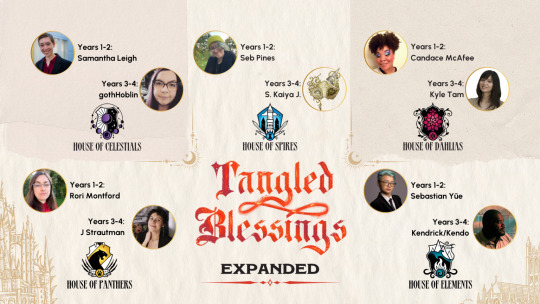
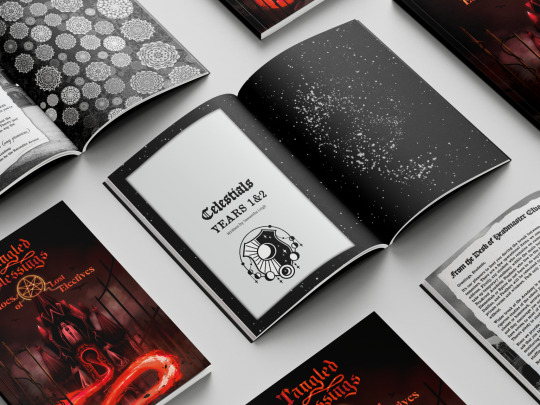
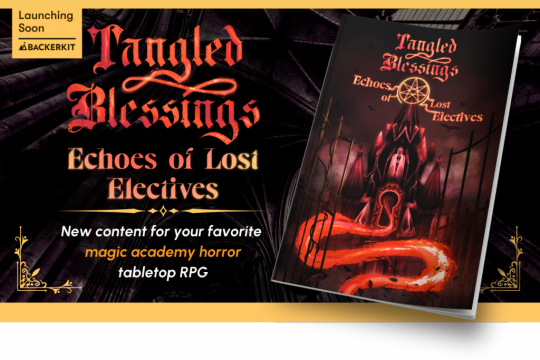
78 notes
·
View notes
Text
Very cool to reach their goal, please share and donate if you can!
1 note
·
View note
